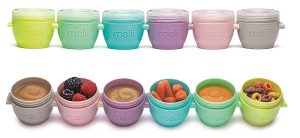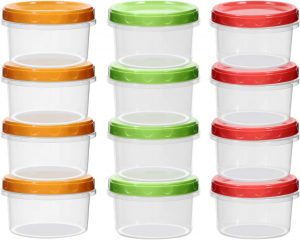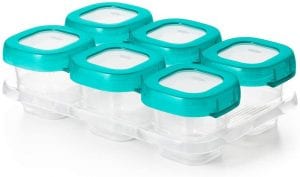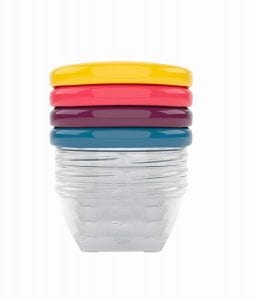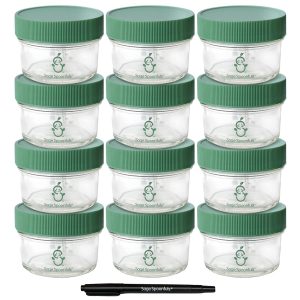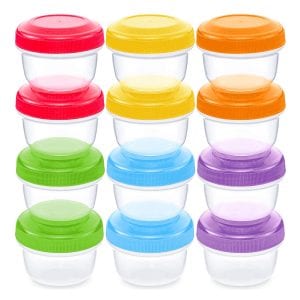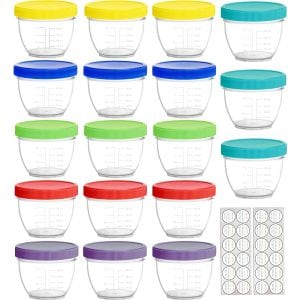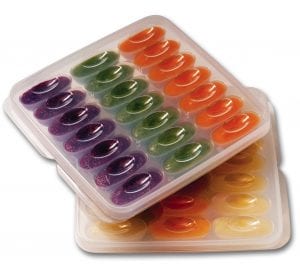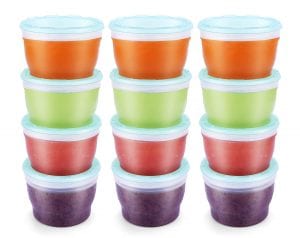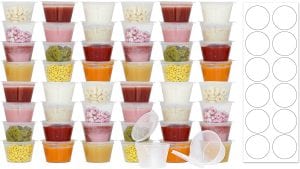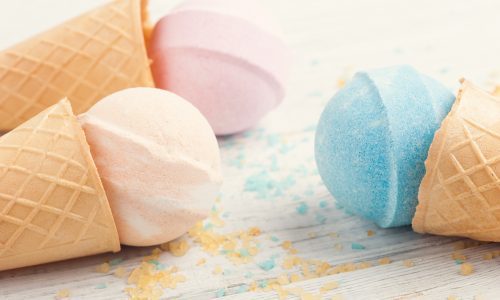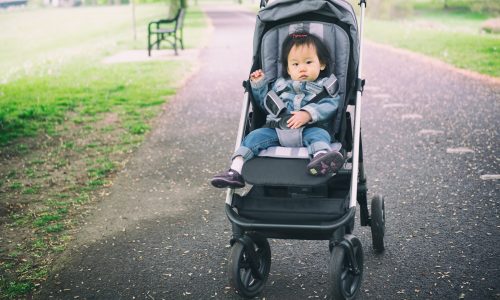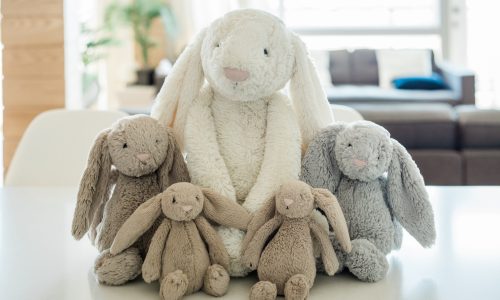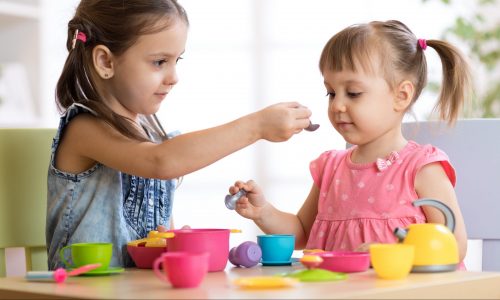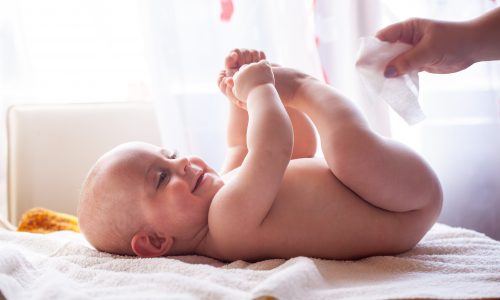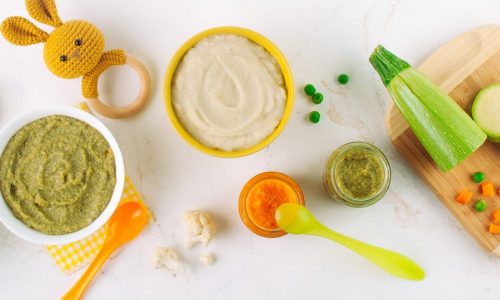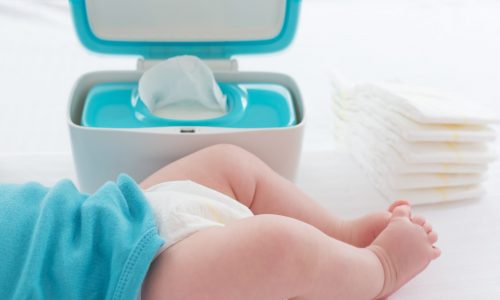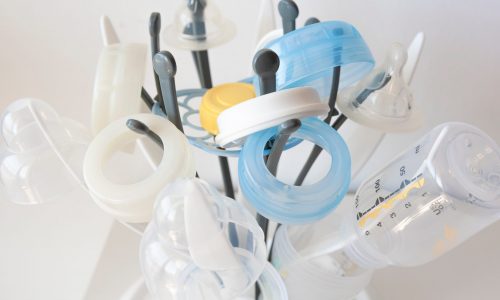The Best Baby Food Freezer Container
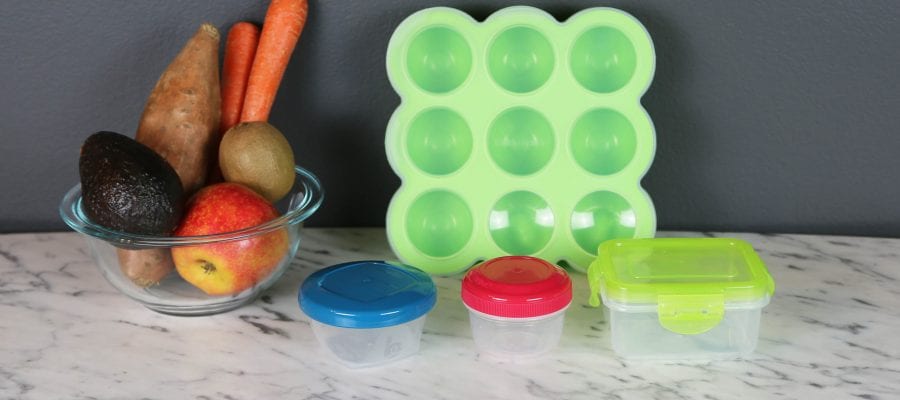
Our Review Process
Don't Waste Your Money is focused on helping you make the best purchasing decision. Our team of experts spends hundreds of hours analyzing, testing, and researching products so you don't have to. Learn more.
Our Picks For The Top Baby Food Freezer Containers
- 1. melii BPA-Free Baby Food Freezer Containers, 6-Pack
- 2. EONJOE Easy Open Baby Food Freezer Containers, 12-Pack
- 3. KIDDO FEEDO Easy Remove Silicone Baby Food Storage Container
- 4. OXO Tot Leak-Proof 2-Ounce Baby Food Freezer Containers, 6-Pack
- 5. Samuelworld BPA-Free Silicone Baby Food Freezer Storage Container
- 6. Babymoov Labeling Baby Food Freezer Containers, 4-Pack
- 7. Sage Spoonfuls Portion Control Glass Baby Food Freezer Containers, 12-Pack
- 8. WEESPROUT Reusable Baby Food Freezer Containers, 12-Pack
- 9. Youngever Microwave Safe Baby Food Freezer Containers, 18-Pack
- 10. Mumi & Bubi Space Saving Baby Food Freezer Containers, 2-Pack
- 11. Minne QOOC Transparent Baby Food Freezer Containers, 12-Pack
- 12. Tovla Baby Food Freezer Storage Containers, 50-Pack
These multi-colored baby food freezer containers do an excellent job of storing homemade baby food. The set includes six containers, each of which can hold up to 2 ounces. When the baby gets a bit older, the containers can be used to transport snacks, like fresh fruit or fish-shaped crackers, on the go.
Affordable OptionWhen shopping on a budget, this economical baby food freezer container is the way to go.
If you prefer to prepare meals for your little one in batches, then this baby food freezer container set is your best bet. It comes with a total of 12 containers that each have a large 8-ounce capacity. The set is also spill-proof, as the lids screw on nice and tight.
Stock UpThese baby food freezer containers are dishwasher safe for easy clean up.
Freeze nine portions at a time with this baby food freezer container that has nine individual pods. Simply insert the baby food and attach the lid, then slide it into the freezer. Each pod holds 2.5 ounces of food and volume markings help you measure out the right portion of food for each serving.
Nine Portions in One TrayMake enough for nine portions, then separate them into the individual pod to store in your freezer for later use.
With these baby food freezer containers, you'll be able to create a batch of food your little one, eliminating the need to cook and prepare food daily. The containers can be stored in the refrigerator or freezer and then microwaved when it's time for baby to eat. Since the containers are airtight and leakproof, they also travel well.
Dishwasher SafeThe clear lid and body on this baby food freezer container make it a cinch to see which vegetable or fruit flavor is inside.
Buying Guide
Time is at a premium for parents of young children. You have to take care of feedings and diaper changes and making sure your infants grow up to be well-adjusted adults. Anything you can find to make life a little easier is welcome.
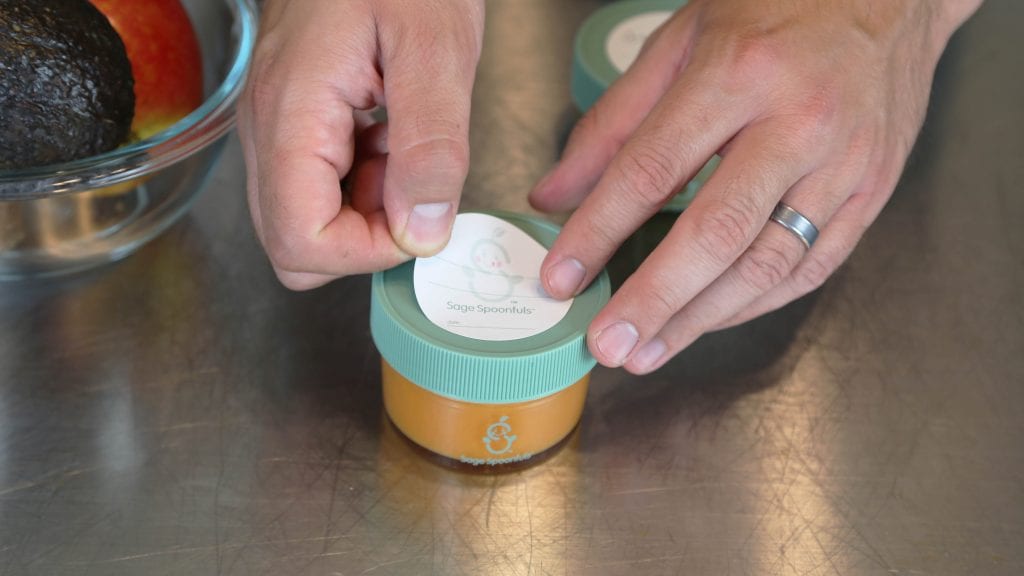
Many parents choose to make their own baby food, using fresh ingredients and pureeing them to avoid the artificial ingredients that come in packaged baby food. But one of the best things about packaged food is that it comes in handy serving-size containers. Food is portioned out and you can just grab a package and toss it in a diaper bag if you’re on the go.
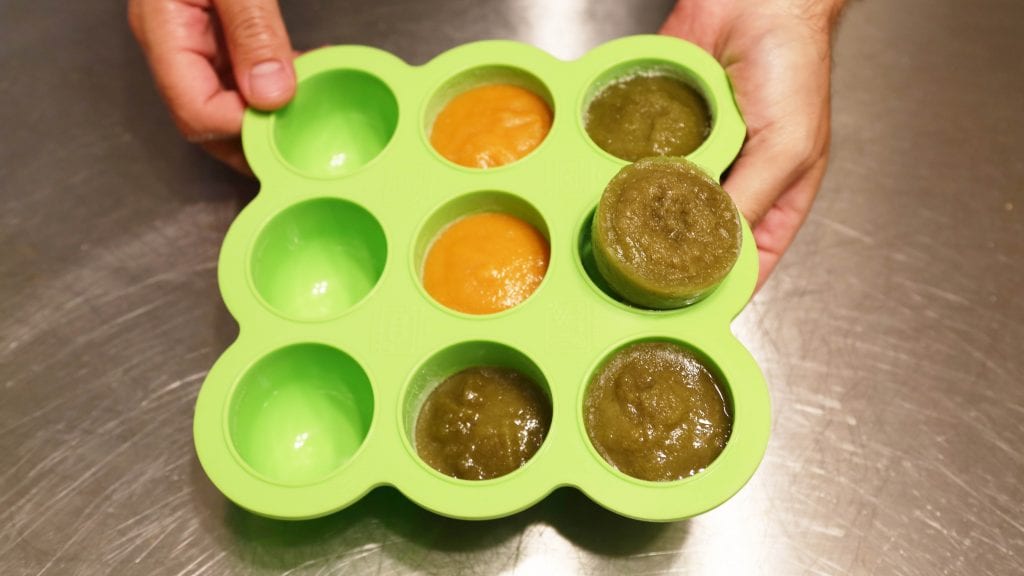
If you make your own baby food, you’re in luck. There are a variety of containers that you can either store in the refrigerator or freezer for the same grab-and-go convenience you get with the packaged food you buy in the grocery store. Simply make your baby food in larger portions, then separate them into smaller containers for storage.
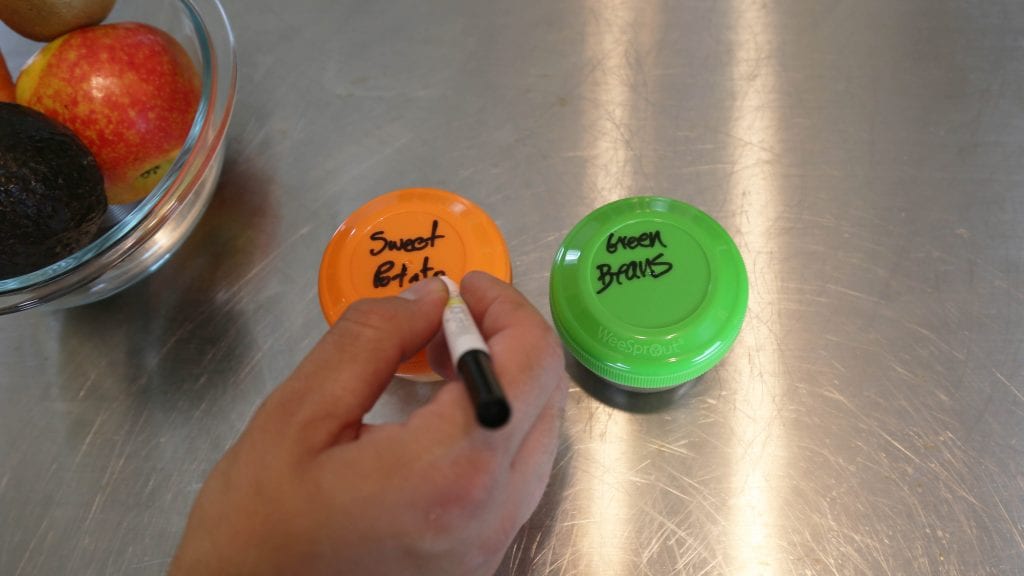
The amount of food your baby will eat varies by age, but by the time your baby reaches three to five months, you’re probably feeding 6 to 7 ounces five or six times a day. Making fresh food for all those servings would take any extra time you have in a day. Food containers for baby food often come in 2- to 4-ounce portions, so you can pull a couple out of the freezer, defrost them, and feed your baby at the designated time.
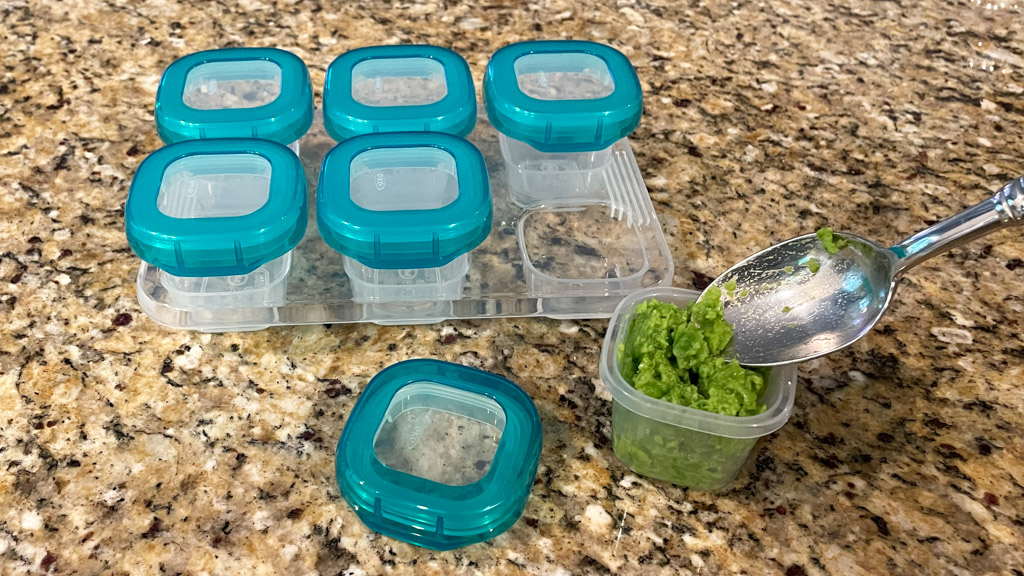
But if you plan to freeze your baby food, you’ll need a container that’s safe to store in the freezer. There are some that seal up individually, but if you’re home all day, you may find a single tray with multiple pods for storing servings of baby food easier than individual containers with lids.
What to Look For
- If you’re storing baby food in the freezer, it can help to track what’s in each container, as well as the date it was made. Some containers let you write information on the lid. Use a washable but durable marker like a felt-tip pen to make the note.
- A better alternative to writing on the lid could be special sticky notes designed to survive moisture-prone environments like freezers. These waterproof sticky notes make it easy to note the contents of each container, along with the date it was either made or put into storage. Using these, you won’t have to worry about using a pen with ink that will wipe off between uses.
- When stored in the right container, homemade baby food should last 48 hours in the refrigerator if it’s made from fruit and vegetables only. Add meat, fish, poultry or eggs to the mix and you’ll need to consume the food within 24 hours. For longer duration, store the food in the freezer, which ups its lifespan to one to three months, ideally. You can technically stretch it to three to six months.
- Instead of freezing the baby food, you could freeze the fruits and vegetables you’ll use to make it. You’ll need to cook the ingredients first, then freeze them, but you can then later thaw them and include them in your baby food without having to go to the trouble of cooking them on the spot.
- If you want to be able to wash your containers between uses, make sure you’re choosing one that’s dishwasher-safe.
- You’ll also want to check for safety in the microwave before buying a container set. You may want to defrost your frozen baby food quickly at some point and being able to slip the entire container into the microwave will be a big help.
More to Explore
Packaged baby food dates all the way back to the 1920s, when Clapp’s Vegetable Soup was first sold through pharmacies in the U.S. This was just the start, though. Clapp’s Baby Foods soon expanded to include 14 different types of baby food, including liver soup. But baby food really took off in the late 20s, when a pediatrician told Dorothy Gerber that her 7-month-old daughter should eat strained vegetables. After hand-straining them herself initially, Gerber decided her husband’s canning company was a better fit for the job. Soon after, employees began asking for their own canned vegetables for their children, and the Gerbers realized there was a market for what they were manufacturing.

